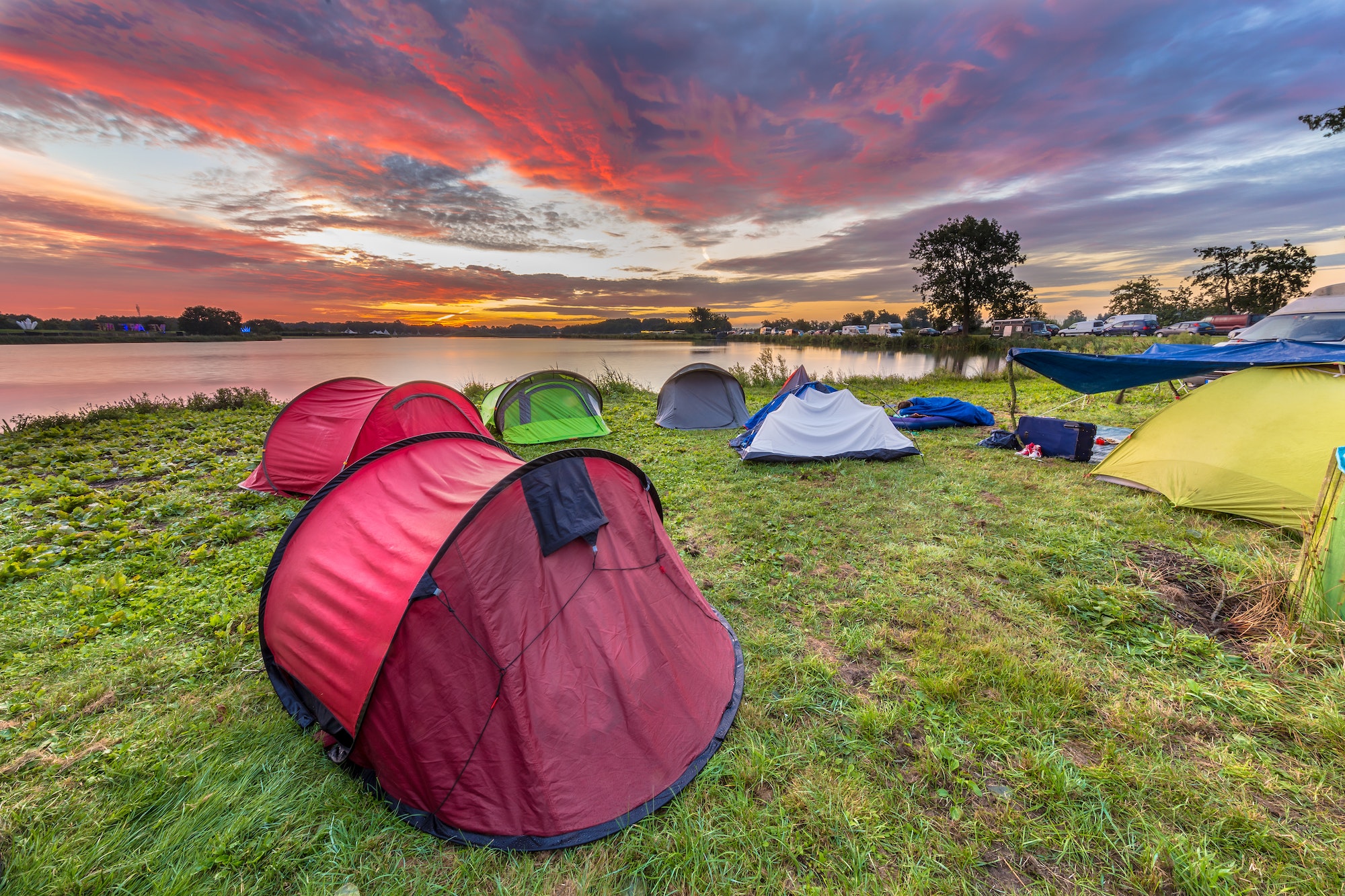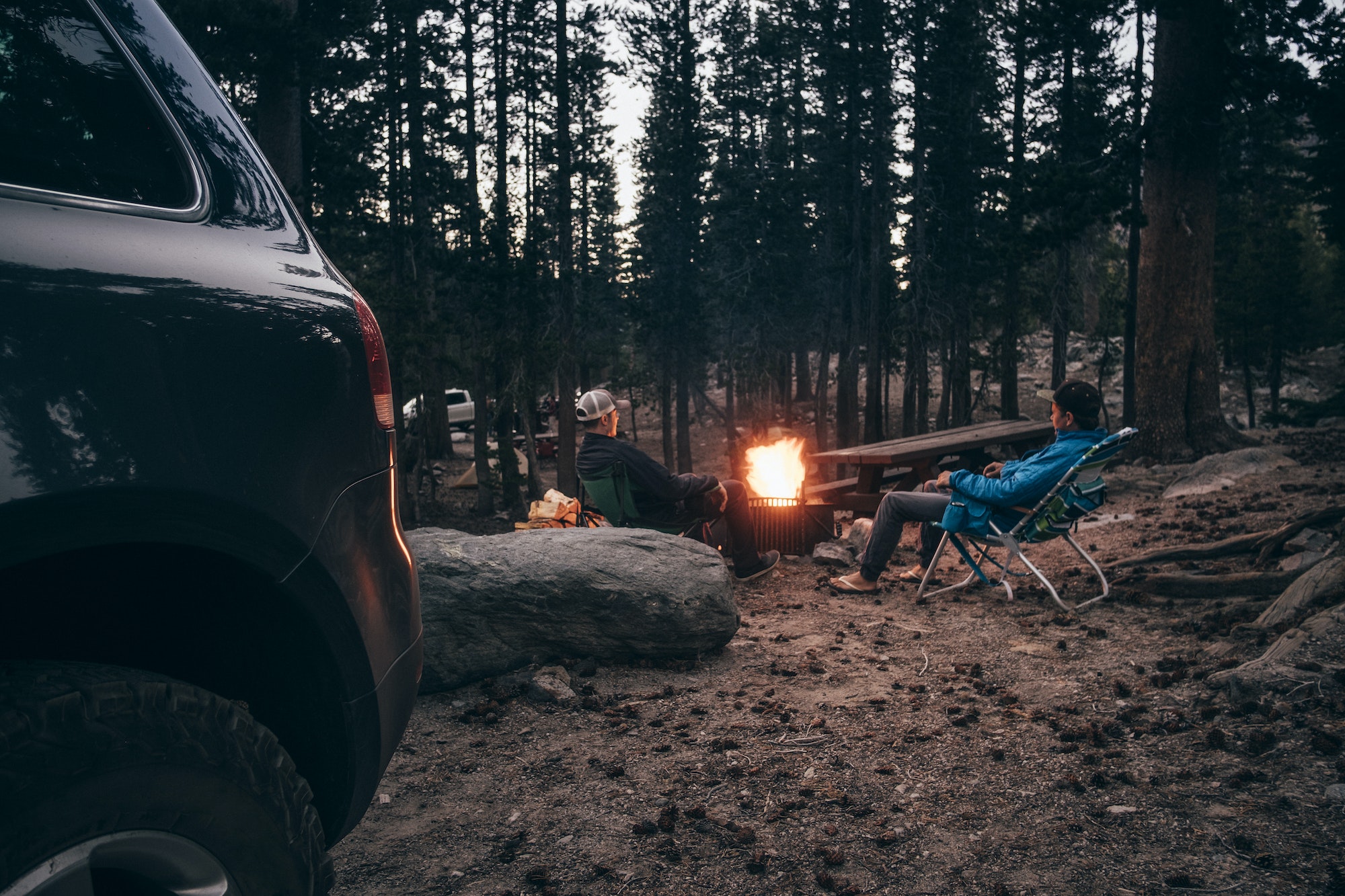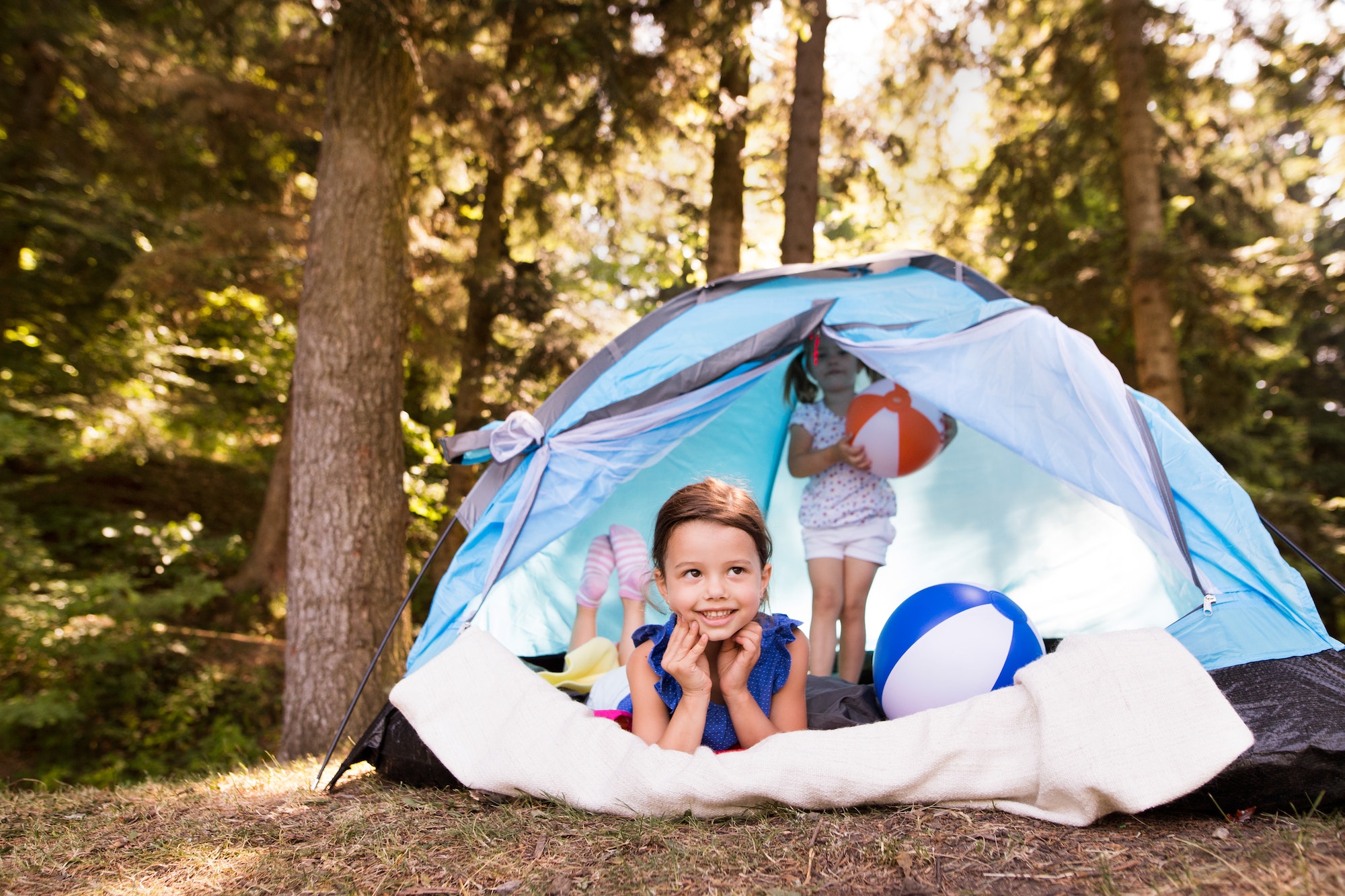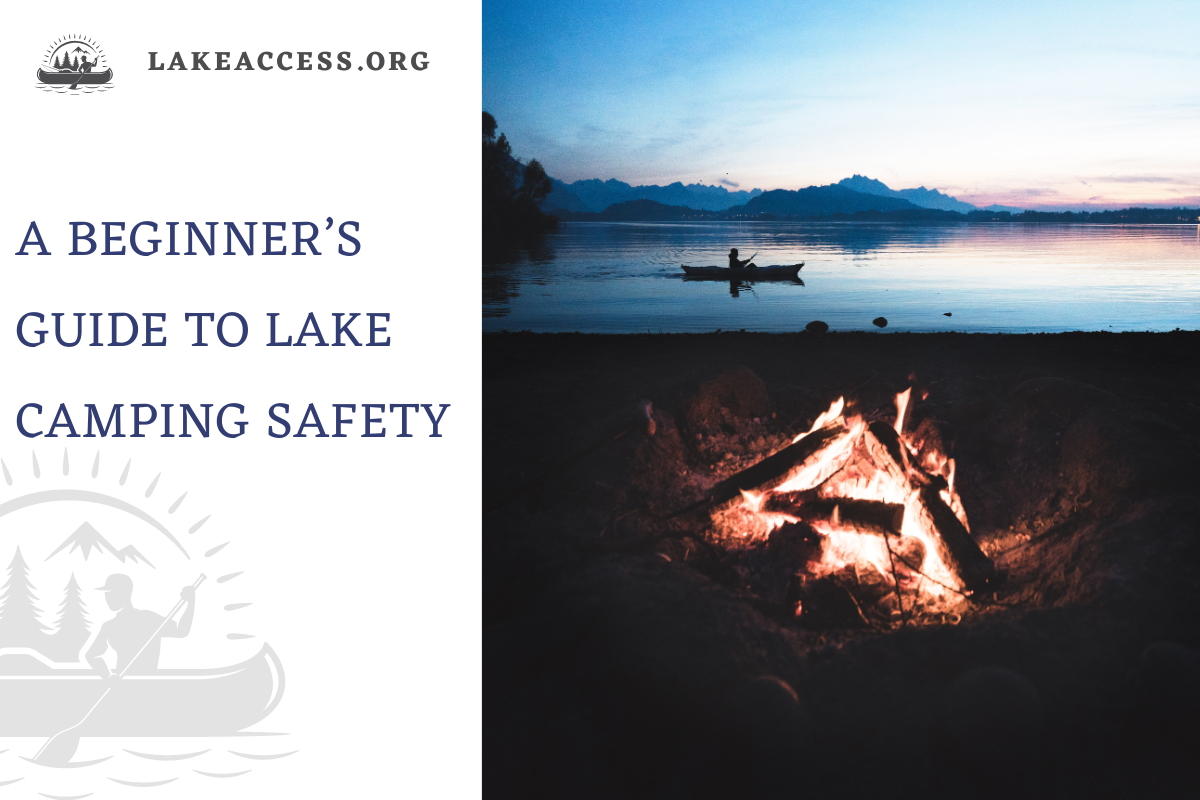Lake camping is a great way to enjoy the outdoors and spend time with family and friends. However, there are a few things you need to be aware of in order to stay safe while enjoying your trip. In this blog, we will explain everything you need to know about how to stay safe during lake camping and enjoy the experience.
Reasons why you should go lake camping
There are numerous reasons why you should go lake camping. Firstly, it’s an ideal way to get away from your daily routine and take in the beauty of the great outdoors. It’s a great way to get active and participate in exciting activities like fishing, hiking, boating, horseback riding, and more. Also, you can enjoy new experiences, like different cultural attractions, regional fare, and wildlife. Traveling farther distances means you can easily justify taking an extended vacation. Lastly, there are plenty of KOA locations across North America, so you can count on support, on-site amenities, and helpful staff if you’re a first-time camper. All in all, lake camping is a fantastic way to get outside, have fun, and make unforgettable memories.

Safety tips when going lake camping
Here are some essential safety tips that you should know about if you’re planning a lake camping trip:
Check the weather forecast
It is essential to always check the weather forecast before going lake camping, as it can have a significant impact on your trip. Unpredictable and dangerous weather conditions, such as thunderstorms, high winds, and lightning, can create hazardous conditions and should be considered. Additionally, suppose rain is in the forecast. In that case, it is essential to be prepared with the necessary gear to keep you dry and comfortable, such as a rain fly, a tent footprint, and a waterproof rain jacket. Knowing the weather will also impact your clothing decisions, as you’ll need to pack for whatever season and temperatures you’ll encounter. Finally, researching the weather ahead of time can help you determine the best time to book a campsite and the best months to camp in the area. This way, you’ll ensure you have the most hassle-free and enjoyable camping trip possible.
Use proper equipment and techniques when starting a campfire
Starting a campfire is a great way to enjoy time outdoors. To safely start a campfire, you should follow a few simple steps.
First, check the park service website where you’re camping for fire restrictions, particularly in summer and fall. Many campgrounds will limit where, when, and the types of fires that are allowed during fire season.
Once you’ve determined that it’s safe to light a fire, you’ll need to gather the necessary equipment. You’ll need some newspapers, kindling, larger pieces of wood, and a fire starter (or matches). You can also bring firewood from home, but make sure to check the firewood rules for where you’ll be camping and double-check if there is a fire ban. Lastly, make sure you have a fire-roasting stick for making s’mores.
Next, find an appropriate place to start your campfire. Designated fire pits are the best option, but if you’re camping in the wild, you can create a fire pit by placing rocks in a 2-foot diameter circle. The fire should be at least 100 feet away from any water source, and avoid making your fire near trees with low-hanging branches.
Once you’ve set up the fire pit, it’s time to start the fire. Begin by laying a few sheets of newspaper at the bottom of the fire pit. This will provide fuel for the kindling and larger pieces of wood. Place the kindling on top of the newspaper and light it. Once the kindling has caught fire, add the larger pieces of wood and start roasting marshmallows and making s’mores.
When you’re finished, use a shovel or stick to stir the campfire and check for any hot embers hiding in the ashes. Make sure the fire is completely extinguished before you leave. Pour water on the embers and stir them until the fire is out. Add a layer of soil to help ensure the fire is all the way out.
Following these steps will help you start a safe and enjoyable campfire. Always be careful and check the fire restrictions of the area you’re camping in.
Have a safety kit and first aid kit
Safety and first aid kit for lake camping should include an insect repellant, water bottle, sunscreen, first-aid kit, portable fire extinguisher, local field guide, adventure medical kit, adventure trail dog medical kit, pain killers, allergy medication, wound kit, blister kit, satellite communication device, map and compass, prescription medications, hygiene items, bandages, sunscreen, insect repellent, soap, toilet paper, small towel, hand sanitizer, pet leash and harness, food and water bowls, toys, pet first-aid kit, ID tags, bedding, children’s toys, special first-aid supplies, child-friendly food, stroller, crib or play area and wilderness first aid classes.
Make sure to bring the right camping gear
When going lake camping, it is essential to bring the right gear to ensure a fabulous trip. A good tent, with a rainfly and footprint, is a must. A comfortable sleeping pad, a temperature-rated sleeping bag, and a sleeping bag liner for additional warmth in colder climates should also be included. Fire supplies should be purchased locally, and headlamps, flashlights, and lanterns are essential for keeping your campsite well-lit. Batteries and a portable charger/power bank are also good to have on hand. Weather-appropriate clothing and bear spray (if in a bear territory) should also be included.
Additionally, a sizeable waterproof bin should be used to store dry food items and disposable tableware, and a sports bag should be used to store the camping gear. To make the camping experience as comfortable as possible, bring a pillow, earplugs, and eye masks. Practicing the setup of the tent in your yard beforehand is also encouraged.
Respect wildlife and maintain a safe distance
Keep at least 25 yards away from less aggressive wildlife and 100 yards away from more aggressive wildlife when camping on a lake., such as bears, etc. For example, if you spot a deer near your campsite, you should keep your distance and slowly back away. To further prevent wildlife encounters, store all food and scented items in the provided food storage locker and dispose of all trash in the campground’s dumpsters before bed. Additionally, avoid camping within 200 feet of water and 100 feet of roads or trails.
Make sure to bring enough food and water
When camping lake, it’s essential to bring the right food and water to stay energized and hydrated throughout your trip. Pack lightweight, durable foods that don’t need to be kept cool and won’t take a long time to prepare. Some good options include granola bars, trail mix, protein bars, nuts, dried fruit, oatmeal, and instant soups. Be sure to pack enough for all meals and snacks when you’re away. Also, pack insect repellant, a water bottle, sunscreen, a first-aid kit, and a portable fire extinguisher.
When it comes to water, make sure to bring a gallon of drinking water per person per day. If freshwater isn’t available at the campsite, you can use a portable water filter to make it drinkable. Remember to bring soap, toilet paper, hand sanitizer, and a small towel for cleaning. Lastly, don’t forget to bring a few bundles of firewood, a cooler and ice, a water dispenser, matches, and a lighter.
Bring a flashlight and extra batteries
It is essential to bring a flashlight and extra batteries when going lake camping for a variety of reasons. Flashlights and headlamps provide hands-free illumination so you can see your surroundings and carry out camp chores safely. They are also vital for late-night bathroom runs, which can easily be stumbled upon without proper lighting. It is also essential to ensure the batteries are fresh and that flashlights and lanterns emit enough light. Testing them at night before heading out is essential to avoid any surprises. Additionally, extra batteries are a good idea in case your devices run out of power during your camping trip. Having a reliable light source while camping is essential to stay safe and comfortable in the dark.
Make sure to let someone know where you’re going
It is essential to let someone know where you are going when going lake camping because you may be in an area with no cell service, in rapidly changing weather conditions, or in a bear country. If something were to happen while you were out camping and you did not return as scheduled, at least you would have someone who could call for help. By leaving your itinerary with a loved one and providing them with a map of the area, they will be able to take steps to get you found. Additionally, it is essential to review any pet-specific rules for the campground or trails before you go and make sure your pet is prepared for the adventure.
Keep food stored properly to avoid attracting wildlife
When going lake camping, it is essential to store food properly to avoid attracting wildlife. The following are step-by-step instructions for doing this:
- Store all food in a vehicle when it’s not in use, particularly at night or when wandering away from the campsite. Many campgrounds provide dedicated storage units for food, usually with an animal-proof latch.
- Use sealable plastic bins to store food instead of grocery bags. A small bin will fit in most campsite food storage lockers and hold a few days’ worth of dry food.
- After cooking and before going to bed, dispose of all trash in the campground’s dumpsters.
- To avoid being surprised by an animal, make a lot of noise when hiking or walking through the brush near your campsite.
Avoid consuming alcohol while boating or swimming
Alcohol or any other drugs can impair your judgment and coordination, leading to an increased risk of danger while boating or swimming. It is essential to remain sober while on the water so that you can be alert and able to make sound decisions. Consuming alcohol can also lead to dehydration, which can cause headaches, dizziness, and other symptoms. It is recommended to avoid alcohol and stay hydrated during boating or swimming so that you can focus on staying safe on the water. Additionally, with navigational hazards, potential collisions, and unexpected weather conditions, it is essential to maintain clear judgment and remain aware of your surroundings to ensure your safety while on the water.
Have a communication device
It is crucial to have a communication device when going lake camping because it can be a matter of life and death in an emergency situation. Cell service may not be available in some areas, so having a satellite communication device can be a lifesaver. It can make emergency calls, receive weather updates, and provide navigation assistance. Also, telling someone where you are going and when you expect to return can be a safety measure that could save your life. Before embarking on any outdoor adventure, it is also essential to be familiar with bear safety, weather conditions, and navigation. A GPS device, map, and compass can help you stay safe and ensure you don’t get lost in unfamiliar terrain.
Respect the environment
There are a few steps you should take to protect the environment when going lake camping.
- Respect the rules of the land or the campsite, keep the noise low, especially when the sun is down, and respect other people’s space and privacy. Additionally, keep campground facilities tidy.
- Secondly, follow the Leave No Trace principle: respect the environment, don’t litter, and bring back everything you take.
- It’s also important to consider how you’re traveling to and from the campsite, using sustainable outdoor gear, being responsible with your waste, and having extra considerations when planning.
- When you’re at the campsite, don’t alter it; pack out everything you pack in, and correctly dispose of grey water and human waste.
- Use all-natural, non-toxic products to avoid impacting the environment.
- Follow the 7 Leave No Trace Principles: carry out everything you take in, clean water sources, bury human waste, build a fire that leaves no impact, and take only pictures and footprints.

What to consider when planning a lake camp trip
Campers should consider various factors when planning a lake camping trip to ensure their trip is a success. These include selecting the right campground, reserving a campsite, packing the right amount of meals, knowing what town the campground is located in, researching nearby attractions, finding out where to buy camp wood, ice, bait, and other items needed for the trip, choosing activities to enjoy during the stay, and packing the necessary camping equipment.
Additionally, campers should research dispersed camping spots outside of designated campgrounds, as these areas require more effort and skills, and check the destination’s website for any necessary permits for popular hikes and activities. Ultimately, planning ahead and preparing for the trip is the key to a successful lake camping experience.

FAQ
What are the essentials for beginner campers?
If you’re a beginner camper, you want to make sure you have all the basics covered in order to stay comfortable and safe. To make sure you’re prepared for your first camping trip, make sure you bring the following items:
Tent – Pick a tent that’s slightly bigger than what you need. Your tent should be appropriate for the season and environment, so look for a three-season or four-season tent if you’re camping in extreme weather conditions.
Sleeping bag – Choose a down or three-season sleeping bag that provides warmth and breathability.
Sleeping pad – A sleeping pad will help keep you warm by reflecting your body heat.
Emergency Blanket – These blankets are designed to provide up to 10-15 degrees of warmth, so they’re essential in cold weather or rain.
Hammock – A hammock is lightweight, packable, and perfect for relaxing by the river or under a tree.
Headlamp/lighting – Headlamps are perfect for setting the mood before you build a campfire.
Stove – Get a two-burner propane camp stove, and don’t forget to bring fuel canisters.
Camping kitchen utensils – Bring a cutting board, knife, mug, and cutlery.
Camp chair – If you’re car camping, a camp chair is great for sitting by the campfire and enjoying the view.
What should I watch out for when camping at a lake?
When camping at a lake, there are a few essential things to watch out for. Make sure to stay up to date with the weather to be prepared for any unexpected events. Pack a good first aid kit and know how to use it in the event of an accident or injury. Bring insect repellent, a water bottle, sunscreen, and a portable fire extinguisher to stay safe. Also, invest in a small first aid kit.
When picking a spot, try to find one that is isolated and camouflaged away from the usual campground. If you’re backpacking, try to camp near a running creek, river, or lake to gather water, but be sure to filter or boil it first! Keep a safe distance from the water (about 200 feet), and don’t camp next to the lake in freezing temperatures. Lastly, follow the “leave no trace” principle when camping, clean up your gear, and properly dispose of any trash when you leave.
What is the best way to find a campsite?
1. Start by searching online for your destination + campsites.
2. Use Google Maps to search for campsites within specific areas.
3. Check larger accommodation sites for popular campsites.
3. Identify your goals and itinerary while keeping the weather in mind.
5. Select a local campground for one or two nights using resources like recreation.gov, ReserveAmerica, The Dyrt, or Hipcamp.
What camping amenities are available at lake campgrounds?
You can expect standard amenities such as fire pits, picnic tables, and food storage lockers at lake campgrounds. If these aren’t available, you may need to bring a propane stove for cooking and your own lightweight camping tables. Additionally, it’s a good idea to bring headlamps or flashlights, bundles of approved firewood, a cooler and ice, a water dispenser, matches, a lighter, a fire starter, a portable charger or power bank, a Wi-Fi extender, a comfortable sleeping bag (with extra padding and a mattress pad or cot).
How do I protect my food from wildlife when camping?
Never leave your food unattended. All edible items and even the hint of smell from them attract wildlife to the campsite. Store all food in a vehicle when it’s not in use, particularly at night or when away from the campsite. Some campgrounds provide dedicated storage units for food, usually with an animal-proof latch.
Store food in sealable plastic bins instead of grocery bags to protect it from pests. If your campsite has food storage lockers, use a small bin like the Sterilite 18-quart clear bin, which will fit in most lockers and hold a few days’ worths of dry food.
What are some tips for setting up a campsite?
1. Set your campsite at least 100 feet away from water sources, trails, or roads.
2. If possible, set up camp in a spot with evidence of previous camping activity to minimize impact.
3. If there are multiple tents, spread them out to prevent a heavier impact in a smaller area.
4. Clear out any objects like rocks or branches that may be in the way when setting up the tent.
5. Make sure the site is clear of debris before setting up the tent.
6. Lay down a tarp to protect the tent from moisture, then place the tent on top. Put the poles together and attach them to the corners of the tent. Stake it down with tent stakes.
7. Consider setting up a large tarp over the campsite in the event of rain. Secure the tarp to nearby trees with rope.
8. Set up the tent at home and make a list of needed things.
9. Place the tent door away from the campfire to avoid filling it with smoke.
10. Leave the campsite cleaner than you found it!

